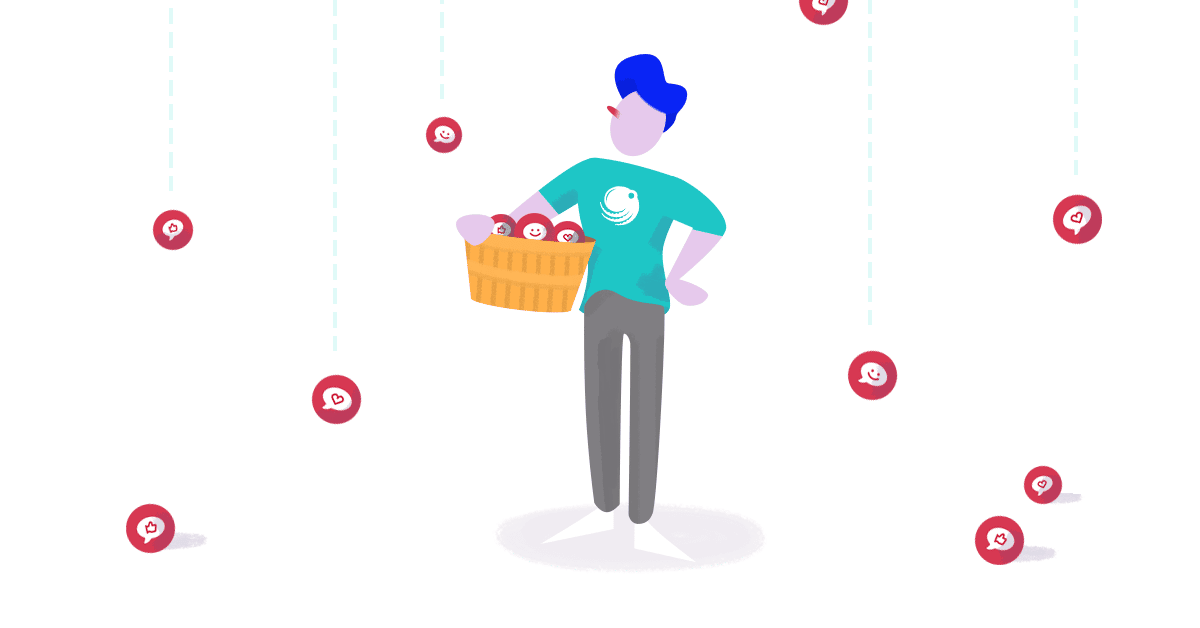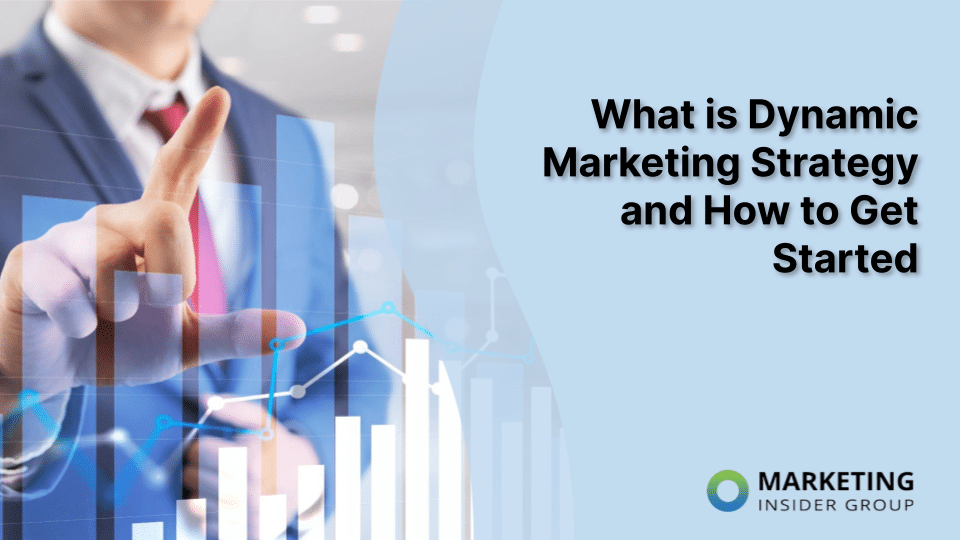
How to Get Free Digital PR for Your Business
These days, we all have to work harder than ever before to build brand awareness, differentiate from competitors, and attract the right people to their online stores.
The internet is noisier, product categories are more competitive, and traditional methods are much less effective than they used to be.
As a business owner, it’s up to you to develop the right content marketing strategy and execute on ideas that help you attract the right attention and carve out a lasting spot in your industry for your business and products.
If you’ve spent even 10 minutes trying to research digital marketing tactics, you know that there is an incredible amount of information out there.
It’s easy to fall prey to the shiny object syndrome trap—feeling like you need to constantly be testing the most creative, ingenious, and out-of-this-world growth tactics you come across.
While I believe that testing and growth hacking new ideas is an important part of building a successful, profitable business today, I fear it can quickly become a distraction for many entrepreneurs in the space.
Too many SMBs are missing out on the opportunities and ROI that can come from reinventing traditional (less sexy) strategies and methods that businesses have used historically to gain traction and fuel growth.
In this article, I’m making the case for the importance and value of PR for startups and businesses that want to grow on the strength of their brands. Despite what some might tell you, public relations is not dead—it just looks different than it used to. It’s still a viable way to grow your business, despite how competitive and saturated the web has become over the last decade.
Here are 8 tips that can help you put together a winning PR strategy:
1. Know Your Brand Story and What Makes You Different
In order to effectively leverage and benefit from some of the PR strategies that your competitors are using to gain traction today, you first have to know your brand story and what it is that truly makes you different from other companies in your niche.
Whether you’re reaching out to traditional reporters or influencers with massive social media followings, you have to be able to easily explain:
- Who you are – What is your personally background, experience, and story as an entrepreneur, and how it has helped position you as a player in your industry or product category?
- Who your audience is – Who are you serving, what do they care about, what other types of businesses and products are they interested in?
- What you do – What are your products, how are they made, what pain points do they solve?
- Where you came from – What challenges or progress have you experienced along the way as your business has evolved?
- Where you’re going – What are your goals for your business, where do you want to take it?
- Why it matters – Why does it all matter? What movement are you trying to create, and why are you trying to mobilize the group of people that you’re ultimately serving with your products?
- What makes you and your products different – Who are the other players in your space, and what makes you and your products stand out?
Spending time answering these questions ahead of time will help you be better prepared for the conversations and follow-up conversations you’re going to have with people who can help you get press for your brand.
The real purpose of going through this exercise is to really get at the heart of what it is that makes your business and products different, and why people should care.
If your story isn’t compelling, if your products are the same as everyone else’s, and if your big picture isn’t defined, it’s going to make it really difficult to convince any reporters or influencers to write about and promote your business and products.
2. Build Your Outreach List
The next step in leveraging PR to boost store or product or service awareness is to start working on building your outreach list—the people in your industry that could help you reach new audiences and attract more people within your target audience. There are essentially 4 groups you’ll want to include in your outreach list.
- Traditional Reporters – people working at publications and news websites who cover your industry or types of products
- Industry Bloggers – people who run popular industry blogs, who regularly feature and review other products like yours
- Social Media Influencers – people in your industry who have an active presence and a large following on social media sites like Facebook, YouTube, or Instagram
- Other Like-Minded Entrepreneurs – other business owners and entrepreneurs who align with your values, mission, or product category
Your main mission is to find the contact information of the people in these groups, and to prioritize them based on how valuable they are, when you want to reach out to them, and how likely you think it would be in being able to convince them to work with you.
To organize your information, create a spreadsheet that has columns and rows for:
- Name of influencer or reporter
- Group type (reporter, blogger, influencer, entrepreneur)
- Associated website or blog
- Number of followers
- Phone number
- Email address
- Mailing address
- Links to social media profiles
- Domain authority
- Priority level (high, medium, low)
- Likelihood to respond (high, medium, low)
- Attempts at contacting the individual (date contacted, goal, response)
Once you have the structure of your outreach list planning document in place, there are two ways you can go about finding influencers:
- Manual – manually searching for and adding reporters and influencers based on who you know already (a more qualitative approach).
- Streamlined – using tools like Buzzsumo and Voila Norbert to research and identify influencers who meet your needs (a more data-driven, quantitative approach).
3. Leverage Your Thought Leadership
One of the easiest ways to get more press is to start proactively positioning yourself as a trusted and knowledgeable resource in the space; your goal should be to participate in conversations that are happening about your industry and product category.
To start leveraging yourself as a thought leader in your space, spend time:
- Answering questions on HARO – HARO (Help a Reporter Out) is a service that connects reporters and bloggers with influencers who can act as sources for new blog posts and articles. Each day, you will receive an email digest with questions that reporters need help answering, categorized by subject. Scan through the digests to find potential opportunities, craft a response, and send it to the writer in need. In most cases, your quote will be incorporated into an article with your name, title, company, and a link back to your website.
- Engaging with people regularly on social media – use tools like Mention to find conversations that are happening about your industry. If you see an opportunity to add to the conversation in some way as an expert, take it! The key here is to not come across as salesy or promotional. Your goal is not to sell people on your products. Your goal is to be a resource for them.
- Answer questions on Quora, Reddit, Facebook groups, and other forums – Find industry forums where questions are regularly being asked about your industry or the pain points that your customers deal with. If you find an opportunity to provide an answer, take it. A word of caution: it’s important to be upfront in forums about who you are and who you work for. Do not try to hide the fact that you own a company and sell products. Try to keep your business out of your answer, and focus on providing value. If you try to hide who you are in order to promote your business or products, the moderators or participators will call you out, ban you from forums, and sometimes even berate your brand on social media for weeks after.

The more time you can allocate to this exercise, the better. Your goal should be to have as many authentic, valuable conversations in as many places as possible in order to spread awareness about you, your store, and your products.
4. Create Your Pitch & Angle
When you have your list of influencers built out, the next thing you need to spend time on is crafting your pitch and unique angle. There’s no perfect equation for writing an email that will guarantee a response, but there are a few best practices you can follow:
- Keep your first email short and sweet. The people you are reaching out to don’t have a lot of time to read through long-winded emails.
- Make your call-to-action extremely clear. They also don’t have time to decipher what it is that you’re actually asking from them.
- Make sure they understand why you’re reaching out to them, and what’s in it for them. This is where it pays to charm.
- Make sure your email does not look like it was automated or sent to a lot of other people. Don’t use the same email copy for every contact you reach out to. Don’t come across like a robot. Be human.
- Include no more than 1 reference URL when trying to help contacts understand who you are. If you really want to get their attention, send them to a private 30-second YouTube video where you are talking to them directly about your company and how they could help.
5. Engage Ahead of Time
Before you actually send your outreach email to reporters and influencers in your industry, it can help to engage with them ahead of time. What this does is turn what would have been a completely cold email into a warmer follow-up or even re-engagement. Here’s how to approach this tactic:
- Step 1: Research your contact ahead of time. Find out who they are, what they care about, what they tweet about, when they publish new blog posts, etc.
- Step 2: Find an opportunity to engage with them. You could comment on a blog post, reply to one of their tweets, share one of their articles, or engage with them on Facebook. A word of caution: do not overdo this. In other words, don’t do all of these ideas at once. Pick one or two ideas from the list before sending your outreach email.
- Step 3: Send your outreach email. You can reference the piece of content that you engaged with, but do not mention the action you took. You want the engagement to look natural, and not like you only commented on a blog post so that you could ask them to do something in return for you. Your goal is to just look like a familiar face or name when the reporter or influencer you are contacting sees and opens your email.
Engaging ahead of time in this way will help you cut through the noise and stand out from all the other emails and requests your contacts are getting from other businesses looking to them for help.
6. Tell Your Own Story, Create Great Content and Share Progress Often
When you do reach out to influencers and reporters, you need to expect that they will spend time researching about you, your company, and your products before they decide whether or not to reply to you. It’ your job to convince them that you are interesting enough and legitimate enough to want to follow-up with. There are a few things you can do on your end to manage the first impression they get when they go searching for you online:
- Tell your story in multiple ways. Influencers and reporters want to know who you are and why they should care. To help them understand on their own before talking with you, share your story online in the form of blog posts, articles, videos, and visuals.
- Create great content. Position yourself as a trusted, informed thought leader in your industry. Few reporters are going to want to write a story all about your business (some will), but many will be writing stories that you could contribute to as an expert. To position yourself as a thought leader, create and share blog posts that address trends in your industry and common questions that your customers have.
- Share progress along the way. Help reporters and influencers recognize that your company is going places and experiencing a lot of really interesting growth and progress. They need to be able to quickly start shaping a potential story in their mind before deciding whether or not to reach out to you. Make it easy for them.

Your ultimate goal is to be transparent and interesting to anyone who goes looking for more information about you and your brand.
7. Make Your Ask
When you’re finally ready to reach out to influencers or reporters, you need to decide what kind of ask you’re going to make. What kind of press do you want or need for your company? There are a number of different types of asks you can make depending on who you’re talking to and what your goals are. Here are a few ideas:
- Ask for help promoting an upcoming product launch or event
- Ask for product reviews
- Ask to contribute to a future blog post or article
- Ask to be featured in a blog post series
- Ask to be included in a round-up or list (ex. best new products for 2018, best gifts for husbands, etc.)
- Ask for advice
Remember, keep it short and sweet, and be very clear about what you need help with.
8. Write That Press Release Anyway
The traditional press release is not nearly as effective for businesses as it used to be 15 or 20 years ago, but it doesn’t hurt to give it a shot anyway. If you have exciting news about your company or your product, follow all the recommendations outlined above, but also take the time to write a traditional press release that you can distribute online. There are still a number of online trade publications and reporters who will pick up a press release and provide the kind of timely coverage you’re looking for.
As mentioned, the added coverage can’t hurt your efforts, but it shouldn’t be the only thing you do to try to get more press for your business. You’re much better off trying to establish and nurture relationships with bloggers and reporters using the tactics and methods described throughout the rest of this article.
Over to You
What have you been doing to get more press coverage for your brand lately? What has or hasn’t worked well for you? Tell me in the comments below!







Not all PR needs to be expensive . Indeed!